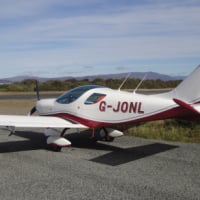Welcome to the FlexRadio Community! Please review the new Community Rules and other important new Community information on the Message Board.
Need the latest SmartSDR or 4O3A Genius Product Software?
SmartSDR v4.1.3 | SmartSDR v4.1.3 Release Notes
SmartSDR v3.10.15 | SmartSDR v3.10.15 Release Notes
The latest 4O3A Genius Product Software and Firmware
SmartSDR v4.1.3 | SmartSDR v4.1.3 Release Notes
SmartSDR v3.10.15 | SmartSDR v3.10.15 Release Notes
The latest 4O3A Genius Product Software and Firmware
If you are having a problem, please refer to the product documentation or check the Help Center for known solutions.
Need technical support from FlexRadio? It's as simple as Creating a HelpDesk ticket.
Need technical support from FlexRadio? It's as simple as Creating a HelpDesk ticket.
Spots API

John G3WGV
Member ✭✭✭
The new spots capability in V2.3.7 is brilliant and the API is ridiculously easy to implement. Within 2 minutes of seeing the FlexLib code I was happily sending pretend spots to Smart SDR using my API tester. Now to implement in my logging program!
Great job, all you dev guys. Attaboys all round I'd say.
73, John, G3WGV
3
Comments
-
So where can I find the Spots API code?? Is the FlexLib info on the Wiki updated for it? I see nothing about Spots API on the Wiki.
---Gary WB8ROL0 -
Yep, get the new FlexLib code at http://www.flexradio.com/downloads/flexlib_api_v2-3-7-zip/ Specifically, look at the RequestSpot function in Radio.cs and all the code in Spot.cs. Eric says the Wiki will be updated in due course but, as always, the FlexLib code is the documentation of record.
0 -
A "simple" program to Telnet into Cluster server and feed SmartSDR with Spots would be great.1
-
That's an interesting idea, Salvador and yes, it would be quite easy to do.More usually the logging program makes the cluster/RBN connection and would be the place to put the spot feeder code, especially as the logger would also need to talk to the radio for frequency/mode control.Even so, I can see the value of your proposed program. Maybe I'll look into this a little later in the year when I have a bit more time. I already have most of the code fragments.2
-
I typically update the API documentation as Eric KE5DTO answers my questions, but since the Spot function was under the alpha test cone of silence, I didn't do that this time.
Since DXLab's Commander maintains a table of active DX stations with metadata for each (from where spotted, grid square, eQSL and LoTW participation, etc) is was as John G3WGV said very easy to display callsigns on SmartSDR using the API Spot command. However, if you're working from a raw spot feed, there's a bit more work to do; you don't want the same callsign to appear 4 times, each separated by a few hundred hertz....0 -
I guess some might argue, but Slice Master is pretty simple and makes telnet connections to cluster servers and sends the spots to the radio. Of course it does a bit more too, but it's not all that hard to ignore the extra features.3
-
Hi Dave,Yes, absolutely with you on that. I do the same thing on my logging program and you're right, any spot feeder program would have to do the same thing. Of course both of us do already have that code...0
-
It shoulD be great to have the telnet feature embedded into smartsdr.... especially the maestro. ÙùI don’t use a PC.... I don’t want to install a PC in the shack to only have spots on the Maesto display. 73 de Jeff | VA2SS1
-
For a Maestro or M modrl user could one program a Raspberry pi to telnet then feed the Spots? In looking at the code, as suggested, it would appear a Pi could take a short-wave schedule and "spot" SW stations. One could highlight in a certain color those in languages the user understands. The question is can the Pi call the API and not be bound to Windows? k3Tim/b1
-
Yes.
SmartSDR will process properly-formed API calls it receives via TCP, no matter what hardware or software was used to generate those calls.2 -
SmartSDR 2.3.7 is only a few days old, but I'd like to suggest that the Spot API be extended in a future version to allow the optional specification of a background color for each callsign. This would make it possible to depict each callsign's known QSLing behavior: via eQSL, via LoTW, both, or neither.4
-
Very cool. Thanks Dave..0
-
A "simple" program to Telnet into Cluster server and feed SmartSDR with Spots would be great.
I just did it while I was waiting for 2.3. I am not in any Alfa/Beta testing group so I started from the end: I gave a look at N1MM docs and got the spot xml definition.
My small program, I jokingly called H-Spot, simply can connect to multiple telnet clusters and send each spot to the Flex UDP port and to a TCP (aggregator) port. It worked fine from the beginning. Now I am having some troubles with the duplicate-spot issue (see another thread) but I am going to solve it.
https://www.dropbox.com/s/tyx2nbk42cv5exq/H-Spot.exe?dl=0
Having said this, I consider SliceMaster the best option. I just would suggest Donald to start the development of its own (embedded) skimmer. Each time I make a band change, Windows remember me CWSkimmer is a bit out of date: I get a nice "Violation Error" and I can't understand why CW skimmer need to be restarted each time (this don't happen if you use SDR-Bridge). This is very annoying expecially during contest operations.
Anyway so far so good, let's see what will happen in July Iota contest.
73' Enzoiw7dmh
2 -
Hi Enzo,
I'm not sure about the "violation error", but CW Skimmer does have trouble sometimes. You might have a zombie CW Skimmer hanging around that is causing you trouble. Try a reboot to see if it clears up.
The CW Skimmer restart is by product of a Slice Master feature and a quirk of the Flex API. Slice Master binds each CW Skimmer instance to particular slice. If the slice is removed, Slice Master will stop the associated CW Skimmer. If the slice is newly created, Slice Master will start a CW Skimmer for it. Most of this time, this is a good thing.
But, depending on how you change bands, Flex might first destroy the slice then create a new one. This often happens if you use the "Band" button on the panafall (left pop-out) menu. If, instead, you change bands by typing the frequency into the slice flag in SSDR, the slice will not be destroyed/created and CW Skimmer wont need to be restarted.
--Don1 -
Grazie mille Enzo!0
-
Dave, there is already a color attribute for spots. Reach out to Eric or Abed about it.0
-
Tim,
Dave is asking about background color, not text color. This request was made and rejected a few times on the Alpha list.
--Don
1 -
Added as feature request #64511
-
I wonder if SSDR thin client would work with embedded telnet?0
-
Another Spot API extension: when the user clicks on a callsign in SmartSDR, send a TCP message reporting the details. This would enable client applications to perform callbook lookups, check award need, rotate antennas, and populate logging windows.2
-
Dave,
The API currently sends a "triggered" status message when the user clicks a spot in SSDR.
--Don
1 -
Thanks, Don!0
-
The API currently only sends a triggered status message when the user clicks a callsign in SmartSDR if the (undocumented)
sub spot all
command has been issued.
Thanks to Eric KE5DTO...0
Leave a Comment
Categories
- All Categories
- 378 Community Topics
- 2.1K New Ideas
- 630 The Flea Market
- 8.2K Software
- 116 SmartSDR+
- 6.4K SmartSDR for Windows
- 183 SmartSDR for Maestro and M models
- 428 SmartSDR for Mac
- 271 SmartSDR for iOS
- 258 SmartSDR CAT
- 191 DAX
- 382 SmartSDR API
- 9.3K Radios and Accessories
- 36 Aurora
- 254 FLEX-8000 Signature Series
- 7.2K FLEX-6000 Signature Series
- 945 Maestro
- 55 FlexControl
- 865 FLEX Series (Legacy) Radios
- 923 Genius Products
- 462 Power Genius XL Amplifier
- 336 Tuner Genius XL
- 125 Antenna Genius
- 296 Shack Infrastructure
- 208 Networking
- 458 Remote Operation (SmartLink)
- 144 Contesting
- 787 Peripherals & Station Integration
- 139 Amateur Radio Interests
- 1K Third-Party Software






